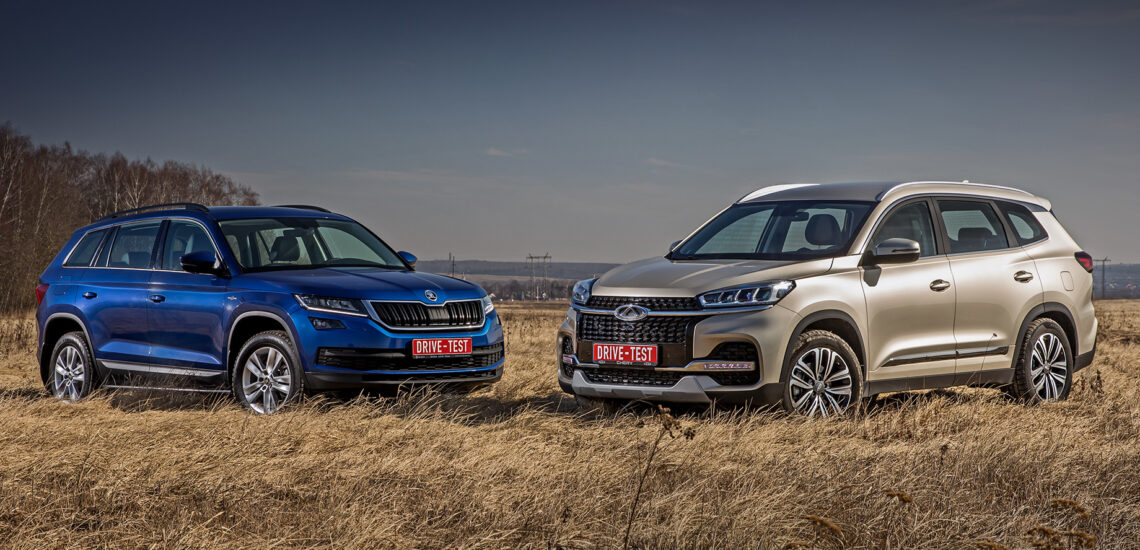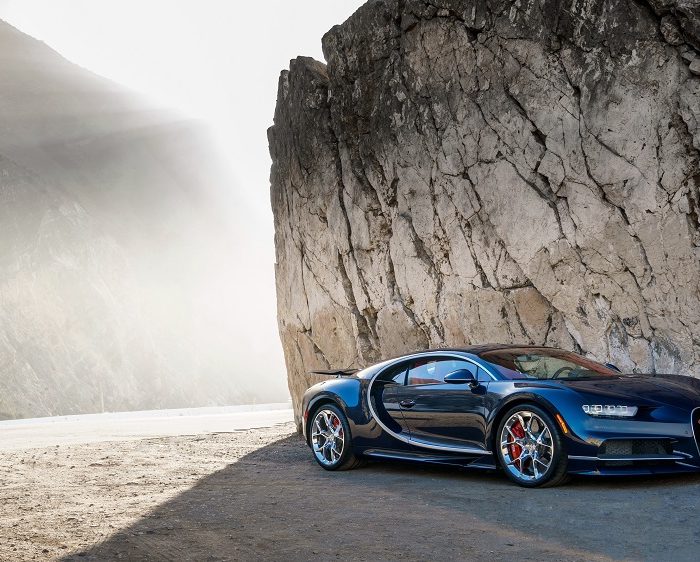Покупці Chery Tiggo 8 поки що обходяться без конфігуратора. На старті продажів китайський кросовер не пропонує альтернативи 170-сильному турбомотору, варіатору і передньому приводу. Єдиний пакет Prestige включає всі можливі опції та третій ряд сидінь. Ви можете вибрати лише колір кузова. Серед конкурентів «Восьмого» десяток моделей, але головною маркетологи Chery бачать схожий за розмірами Kodiaq. До останнього неможливо підійти без конфігуратора.
Найбільший представник сімейства Тігго (15,4 фута в довжину) добре підстрижений і добре складений. За важкими дверима, що прикривають поріг, розкішно драпірований шкірозамінником салон. Виліт рульової колонки регулюється: ця розкіш недоступна іншим одноплатформним автомобілям. Сидіння виглядає гостинно; хороший профіль спинки щільно облягає поперек. Хоча м’які подушки слабо підтримують стегна.
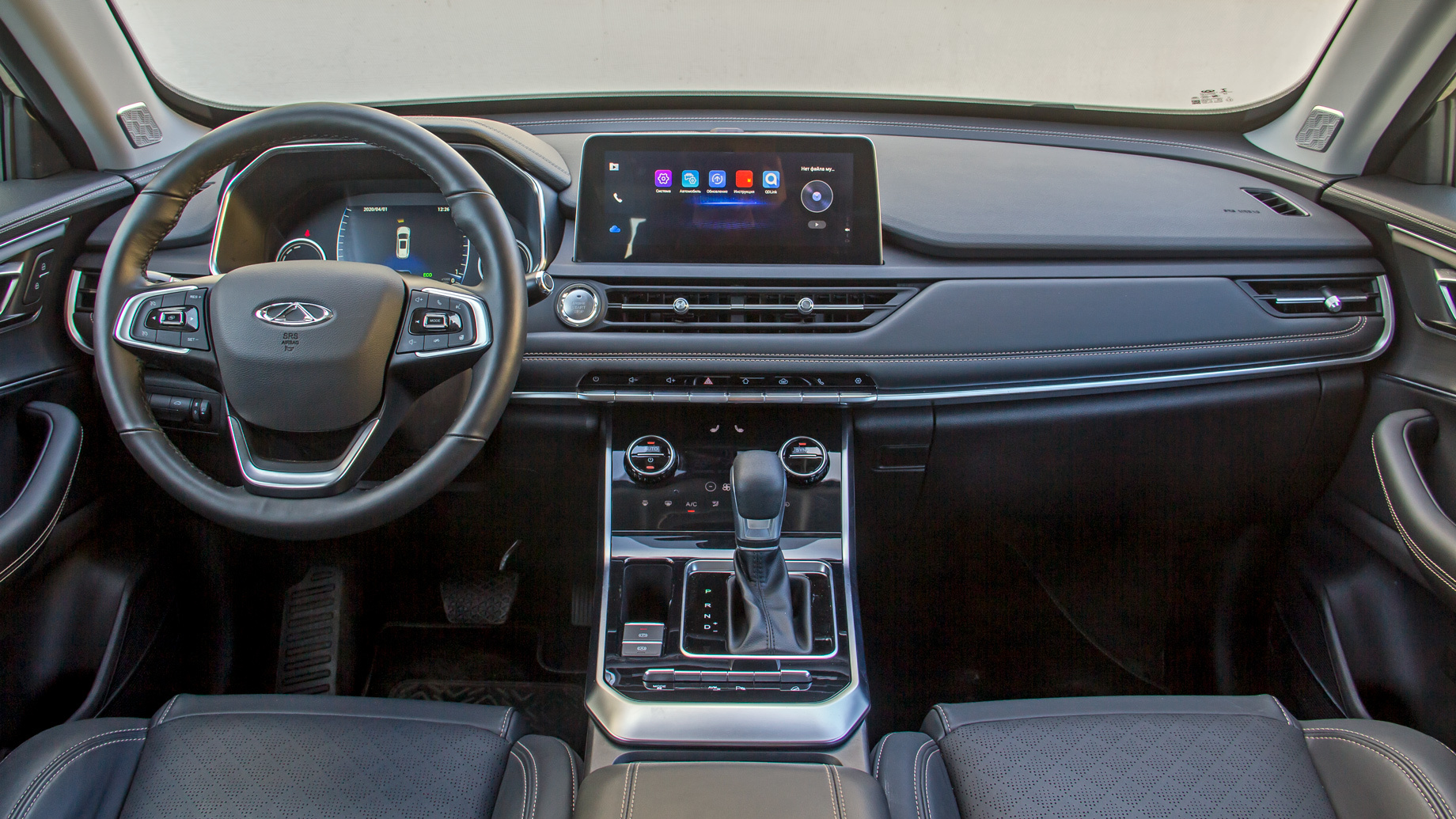
Фізичних кнопок на передній панелі небагато, і вони занадто маленькі. Тоді як сенсорні, які керують, наприклад, кліматичною системою, добре видно лише в темряві. Потрібно як слід прицілитися, перш ніж змінити гучність аудіосистеми або розподіл потоку в салоні, включити обігрів заднього скла або рециркуляцію.. А куди подіти смартфон? Мій ледь поміщається у вузькі підстаканники, а в поглиблення біля кнопки стоянкового гальма поміститься лише запальничка. Я поклав його в дверну кишеню.
Оглядовість хороша завдяки дзеркалам з широким покриттям. Тоді як усічені «вушка» Шкоди змушують витягувати шию, дивлячись у сліпі зони. Крім того, за пухкими колонами Kodiaq легко ховається пішохід або щось більше. Але це єдиний недолік чеського кросовера в організації робочого місця водія. Посадка близька до ідеальної. На передній панелі кнопок на порядок більше, ніж у Tiggo 8, і кожна знаходиться на своєму місці. Міняю клімат, гортаю подкасти і перемикаю режими їзди без роздумів.
Жодного з піддослідних не можна звинуватити у відсутності місця перед колінами чи над головами пасажирів другого ряду. Але Chery все ж трохи просторіше. Хоча в Шкоді посадка комфортніша за рахунок хорошого профілю сидіння і більшого простору для ніг. Крім того, за додаткову плату в Kodiaq пропонуються оригінальні підголівники: відкидні «щічки» утримують голову сплячого пасажира у вертикальному положенні.
Форс-мажорна логістика напередодні закриття прес-парків змушує нас поставити на тест одразу два Kodiaq. Програму руху виконує невигадливий п’ятимісний Hockey Edition на пухких 17-дюймових дисках. Його передні сидіння регулюються механічно. Тоді як в оцінці вантажопасажирських можливостей задіяна власне семимісна Skoda в дорожчому виконанні Style з електроприводом сидінь. Тому не звертайте увагу на різницю в окантовці та кольорах кузова на фото.
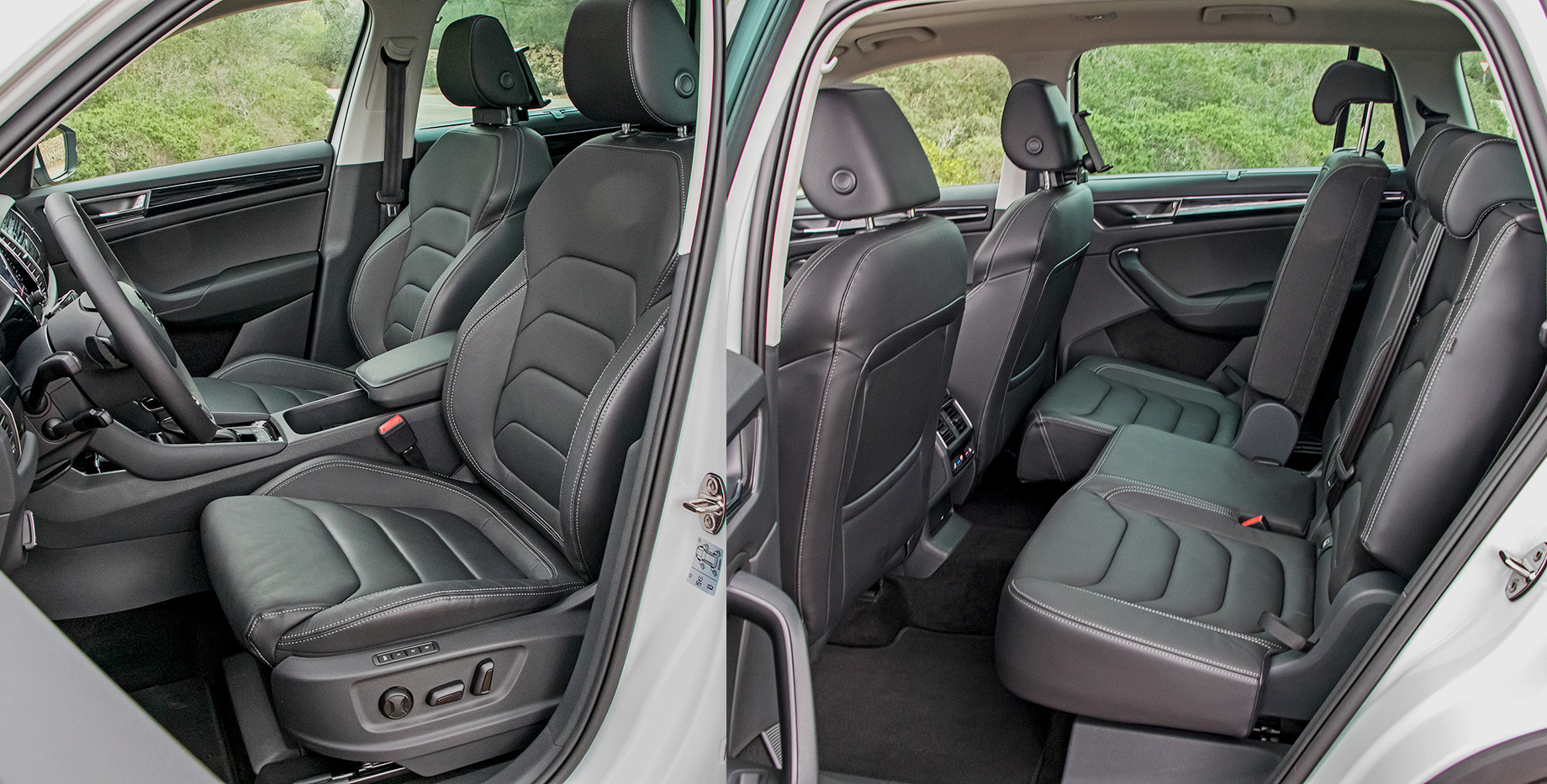
Третій ряд сидінь у Skoda є додатковою опцією за різну вартість в залежності від версії. На те пішло, простіше купити Family ll pack, де крім сидінь у багажнику є додаткові USB-роз’єми, столики та тризонний клімат-контроль. Однак варто пам’ятати, що семеро дорослих тут мають нелегкий досвід: люди зростом близько 5 футів 11 см напхані, як сардини. Сидіння потрібно зсунути вперед, а мешканці заднього ряду при цьому впертися головами в стелю.
Щоб розташувати дорослого на дальніх сидіннях в Tiggo 8, доведеться ще й тіснити мешканців другого ряду. У більшій машині трохи просторіше, але на якусь розслаблену позу розраховувати теж не варто. Пара додаткових поздовжніх дюймів не має значення. А дах ще більше тисне на маківки, ніж у Kodiaq.
Вкотре переконуюсь, що розстановка сидінь 2+3+2 — не більше ніж рекламний трюк, коли йдеться про кросовери довжиною менше п’яти метрів. Через тісноту сидіння третього ряду часто називають дитячими, але чомусь не наголошується, що чекає дітей у разі зіткнення ззаду. Скло п’ятих дверей висить на десяток сантиметрів над підголівниками. Я точно не збираюся наражати свою дитину на таку небезпеку.
Водій Kodiaq затиснутий з дюймовим кроком між педалями газу та гальма. Так легко спіткнутися, підставивши ногу. І іноді шестиступінчаста роботизована DQ250 з «мокрими» зчепленнями теж дивна. Після переходу з Reverse на Drive тестовий автомобіль супроводжує натискання на акселератор відчутним ударом. І невелике збільшення тяги на малих швидкостях — найчастіше з неприємним ривком. Хоча буває, що все йде гладко.
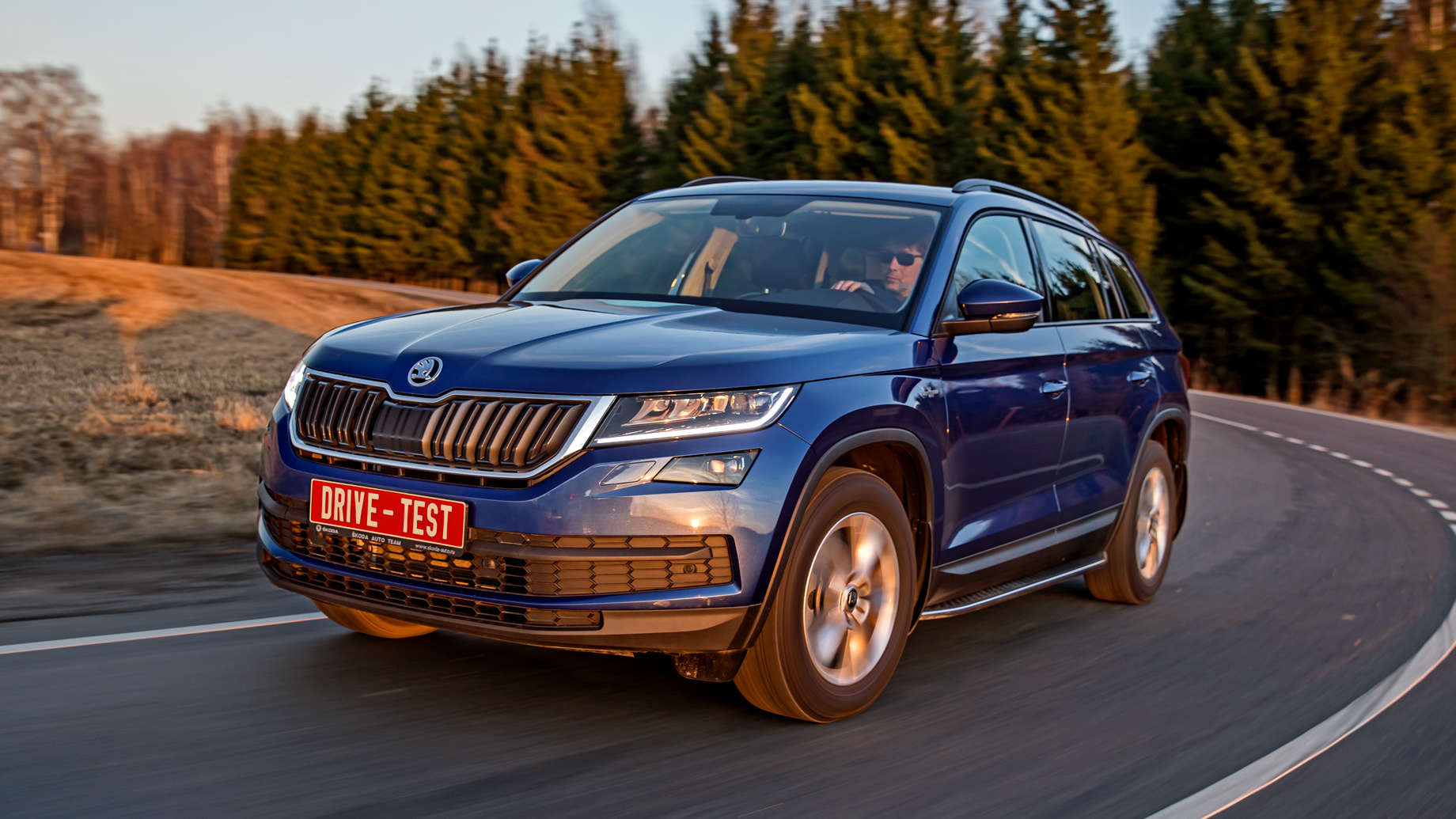
Якщо раніше ми відзначали нелогічність контролю тяги в Kodiaq при часткових навантаженнях, то цього разу коробка прямого перемикання швидко знаходить нижчу передачу навіть у відповідь на незначні рухи акселератора. Нова прошивка? Хоча реакція на динамічні команди впізнана: «Шкода» з відчутною затримкою перемикає дві-три передачі вниз і з гуркотом мчить до горизонту.
На мій погляд, оптимальним для Kodiaq є турбомотор 1.4 потужністю 150 к.с. Він має достатньо тяги в спокійних умовах. Але в процесі обгону на вузькій двосмуговій дорозі приходить бажання зробити чіп-тюнінг «Шкоди» — аби хоч трохи швидше повернутися на свою смугу. Навіть будучи на 20 к.с. слабшим, він здається швидшим за Chery з дуже близькою власною вагою. Дволітровий Tiggo 8 без ентузіазму розганяється до 2000 оборотів за рахунок згладженої реакції на подачу палива.
Китайський турбодвигун видає той самий пік 250 Нм, що й Volkswagen 1.4 TSI, але на 500 об/хв пізніше. У діапазоні середніх швидкостей варіатор забезпечує більш-менш лінійне регулювання тяги. При інтенсивному розгоні з’являється гістерезис, відгуки сповільнені, але КПП не змушує мотор голосити на одній ноті. Псевдо-шестерня з’являється, лише якщо ви перебираєте дев’ять квазі-шестерень вручну. Важелем навряд чи хтось це зробить, а кнопок на рульовій колонці немає.
Tiggo зберігає м’якість реакцій навіть у режимі Sport, що дозволяє використовувати цей найчутливіший алгоритм у повсякденному житті. Шасі налаштоване без зморшок, але, враховуючи розміри кросовера, добре справляється навіть з різкою зміною напрямку, утримуючи кузов від глибоких кренів. Хоча стабілізуюча сила на кермі завжди однаково в’язка, ніби рульовий вал веде не до електромотора, а до діжки з густим медом. Але в ньому розчиняється нерівність дорожнього покриття.
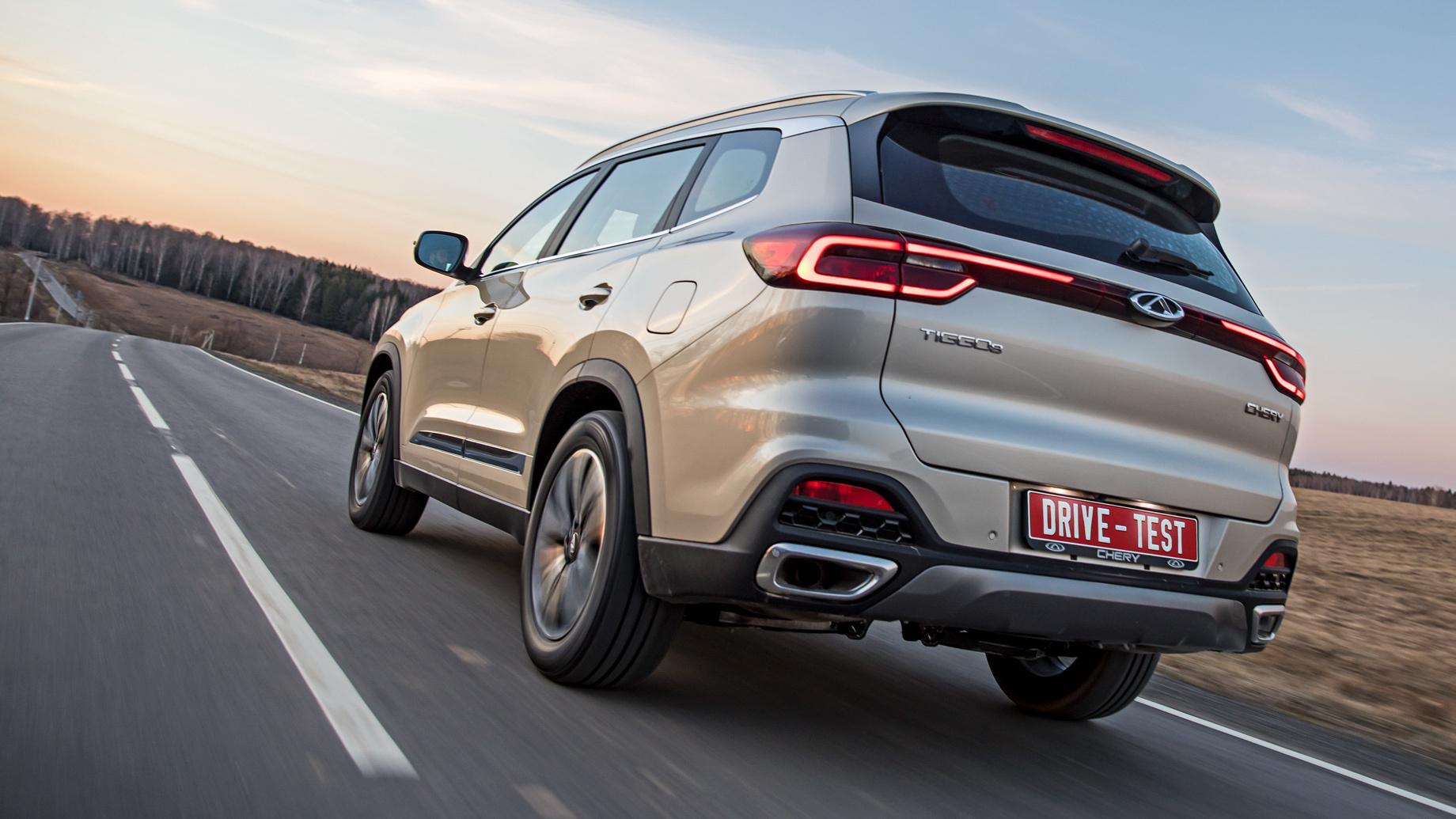
На прямій китайський кросовер не потребує корекції керма і навіть ігнорує колії на асфальті, перемикаючись без проблем з курсом і хитань. Але якщо під колесо потрапить велика яма або деформаційний шов, то воно підніметься так, ніби в підвісці замість амортизаторів встановлені сталеві труби. Особливо страждають задні гонщики, які знаходяться біля короткоходової багаторичажки.
Плавність ходу Kodiaq також далека від ідеальної — незважаючи на те, що на нашій машині встановлені 17-дюймові шини. На відносно рівній дорозі амортизатори справляються з вібраціями, але зі збільшенням калібру вибоїн вони здаються, залишаючи удари пропускними. І якщо підвіска Chery жорстка, але досить енергоємна, то в шасі Kodiaq є трохи в’ялість. Це проявляється в коливаннях непідресорених мас і повторних коливаннях корми при проходженні ділянок з просіданням асфальту.
У штатних режимах Skoda управляється хоч і нудно, але академічно правильно. Реакції при зміні напрямку згладжені, але в той же час точні. Чітке кермо задає правильний кут входу в поворот, як шкільний транспортир. Kodiaq також не вимагає виправлення дуги. Однак якщо, повіривши, ви уявите себе гонщиком, то в першому крайньому повороті кросовер спочатку налякає вас коротким відпочинком вертикальної підвіски, а потім — приголомшить втратою керованого зчеплення коліс, несподівано випрямляючись. траєкторія. Не біжи!
Здається, негармонійність ходових налаштувань Skoda клієнта не бентежить. Посередня плавність ходу не завадила Kodiaq лідирувати в сегменті кросоверів D+, змістивши Outlander і X-Trail з верхніх рядків рейтингу. Минулого року було продано понад 25 тисяч чеських кросоверів. Крім того, Kodiaq показав найактивніше зростання, додавши 54% до показника 2018 року.
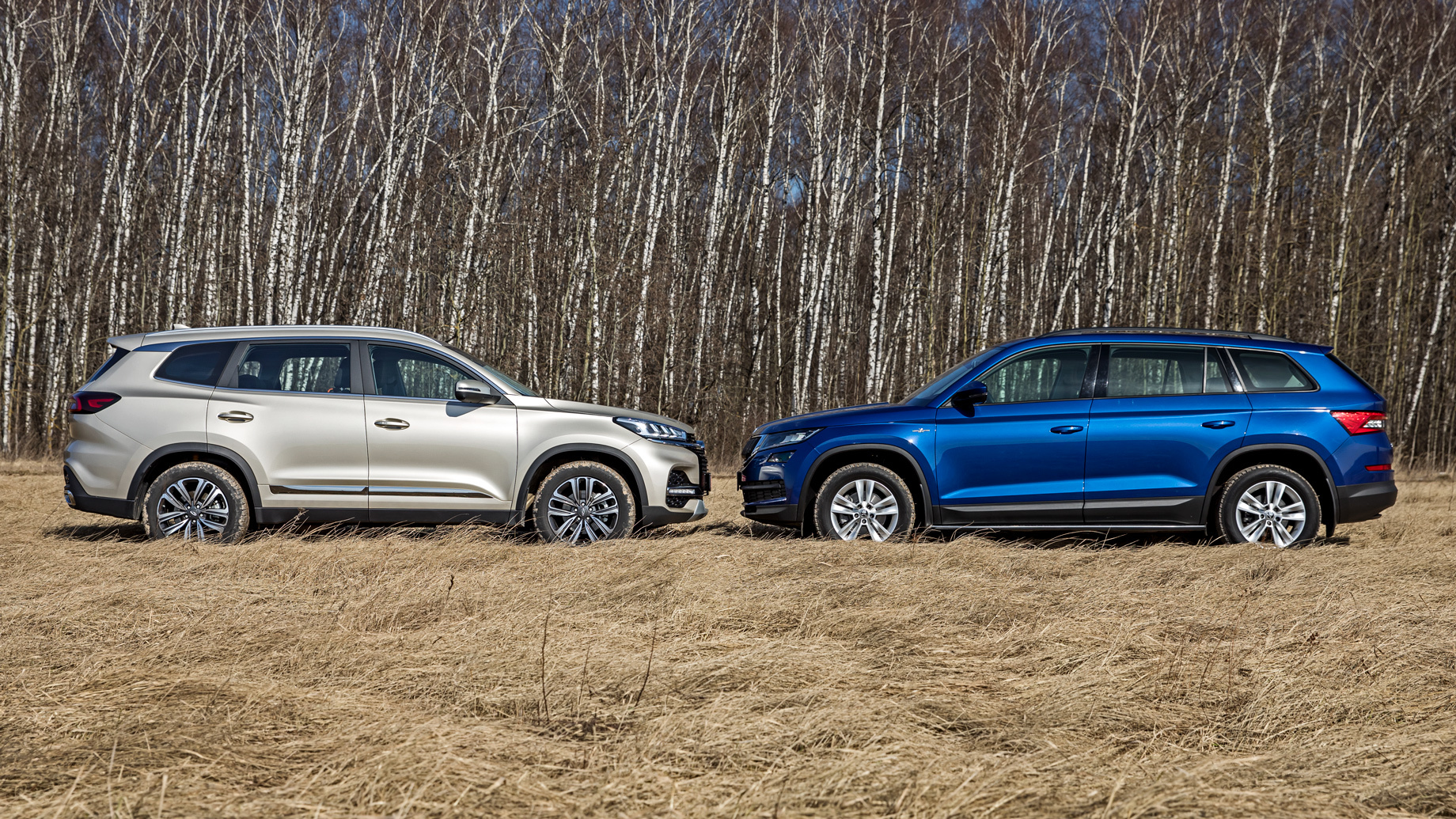
Зрозуміло, що тут справа не тільки в заслугах продукту (а до переваг можна віднести великий вибір двигунів, трансмісій, опцій), але і в локалізації, і подальшому зниженні ціни. Тим не менш, сукупність споживчих якостей Skoda, ймовірно, дозволить їй втриматися на плаву навіть після нової хвилі подорожчання. Потрібно буде підвищити комфорт водіння. Недавнє знайомство з Karoq свідчить про те, що робота в цьому напрямку ведеться.
Перший кросоверний «млинець», приготований Chery для великої сім’ї, — це не біда. Він поступається Skoda в динаміці, плавності ходу і керованості в спокійних режимах. Але він краще тримається і зберігає однозначність поведінки в крайньому випадку. Це не схоже на чистого слабака. У тому числі за рахунок конкурентного цінника, який допоможе людям із середнім достатком закрити очі на деякі недоліки. Більш того, безпосередньо перед нашестям вірусу в представництві обіцяли зробити «Восьму» більш доступною за рахунок спрощених комплектацій. Наприклад, з багажника приберуть відкидні сидіння, непридатні для проживання.
Це переклад. Оригінал можна прочитати тут: https://www.drive.ru/test-drive/chery/skoda/5e9ef34cec05c4c27800001c.html

Опубліковано Грудень 22, 2022 • 7хв на читання

